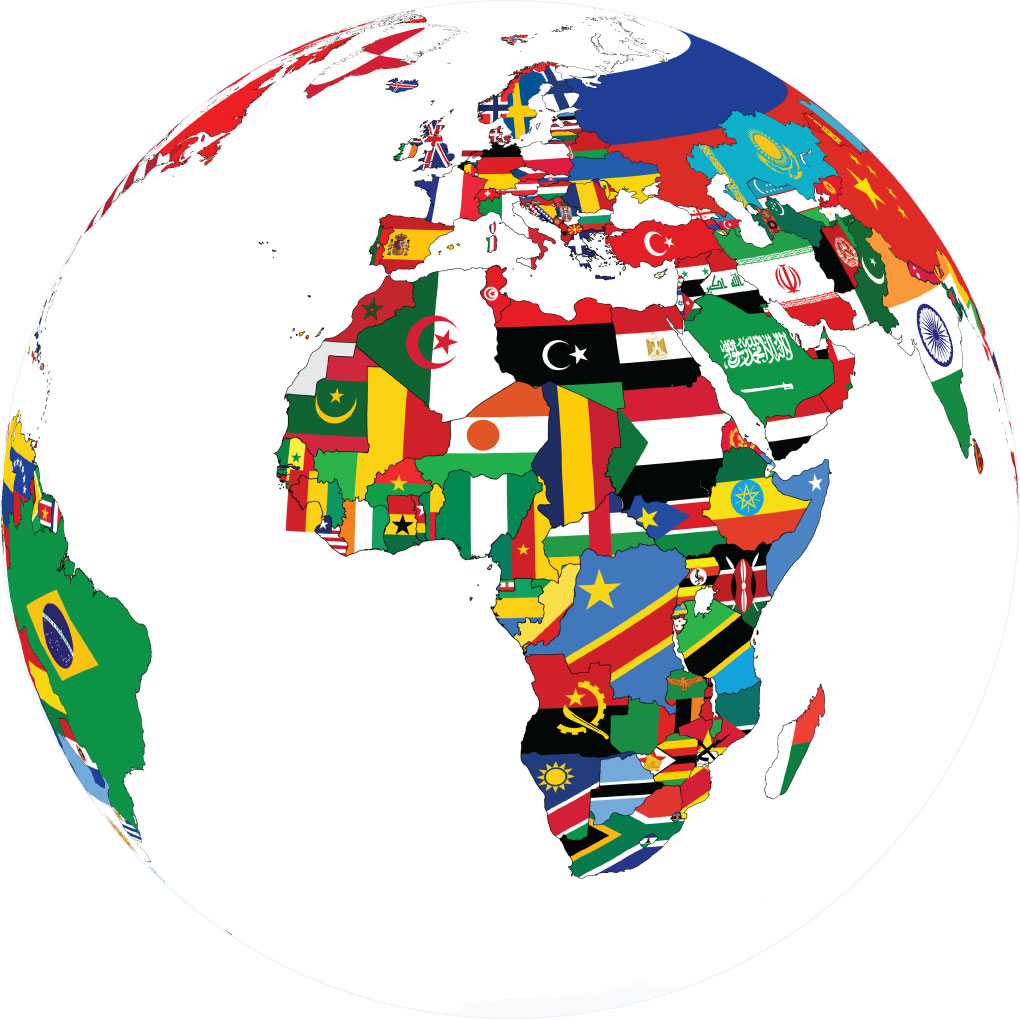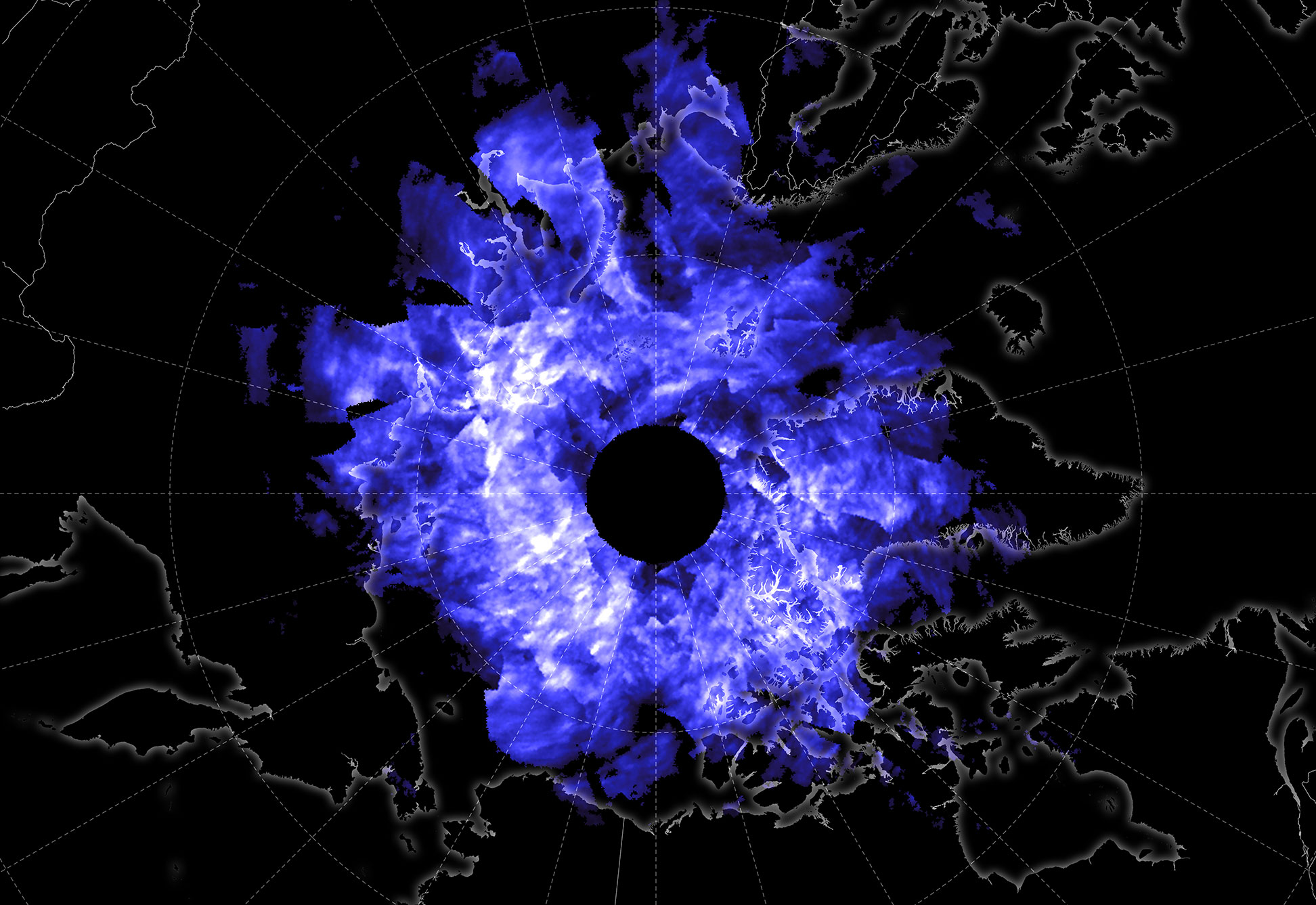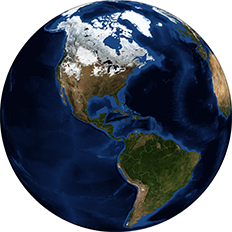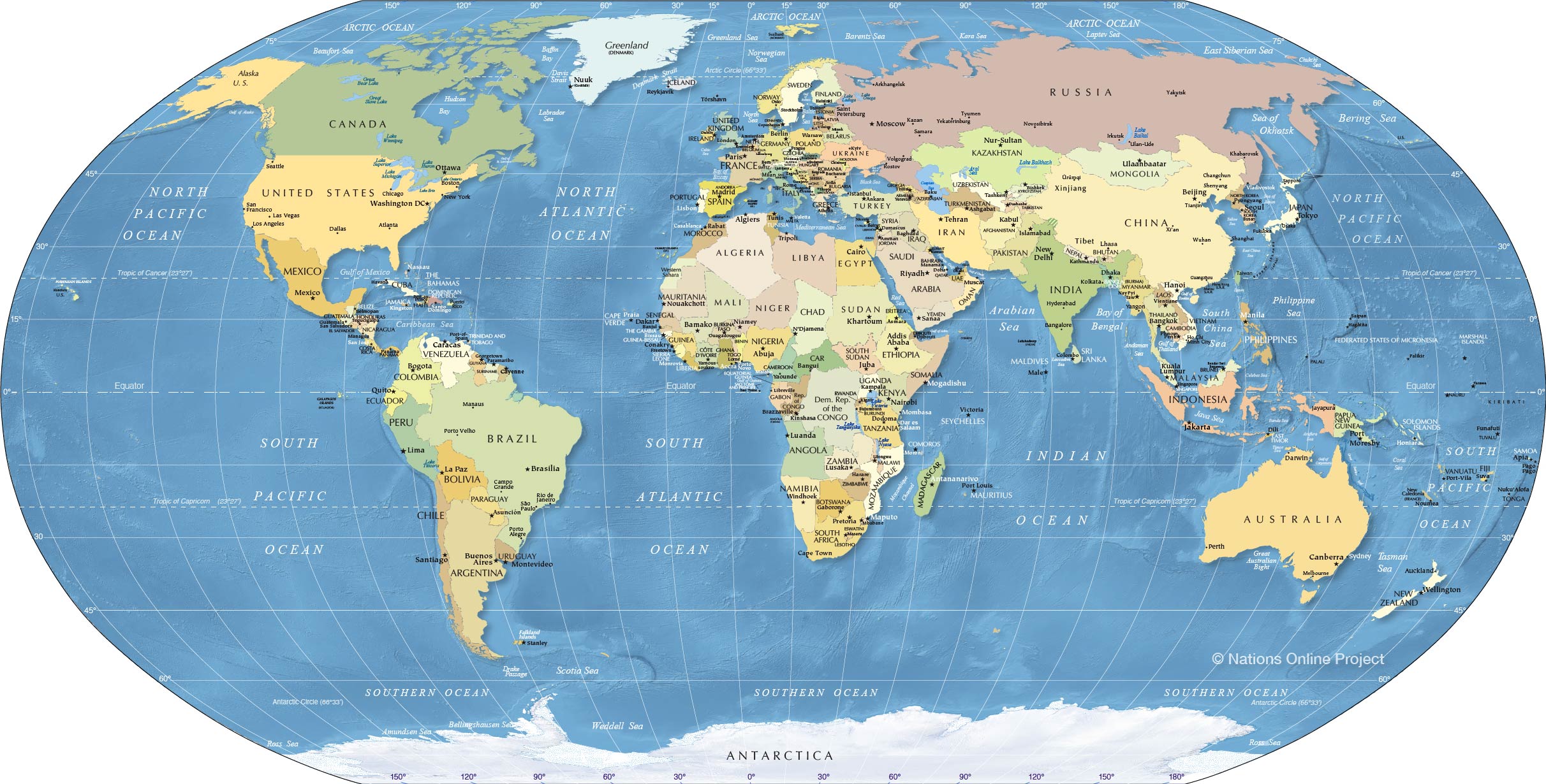Countries and Continents
 Countries on the globe with their flags. Image: © kk nationsonline.org
Countries on the globe with their flags. Image: © kk nationsonline.org A lot, and no, Nambia, Button, and Nipple are not among them.
[1] Anyhow, there are 193, 195, 237, 245, 248, or 253 countries in the world, depending on definition.
193 sovereign states are members of the United Nations, the world's largest intergovernmental organization.
[2] Today there are 195 recognized sovereign states on the planet, the two countries which are not members of the United Nations are
Palestine and
Vatican City (they are so-called observer states).
The IMF, the International Monetary Fund, lists on its "Country Data Profile" page 237 countries, without distinction, whether it is a sovereign country or a dependent territory.
[3]* The United Nations' "UN/LOCODE Code List by Country and Territory" lists 248 countries and territories; the list also includes Antarctica.
[4] Not included in the IMF list, nor the United Nations list, are some country-like territories, geopolitical units that are de facto autonomous but disputed or otherwise not generally recognized, such as Abkhazia, Northern Cyprus, Saharawi (Western Sahara), Somaliland, and Transnistria, which would add five more countries to the list.
And there are nations that have their own territory and cultural identity but are part of a parent state entity, such as the American Indian nations of North America or the Uighurs in the autonomous region of Xinjiang, or Tibet; the former Tibetan Empire is now, not entirely voluntarily, an autonomous region of China.
There are other states or countries or country-like geopolitical entities that are not members of the UN. Besides sovereign nations, there are autonomous self-ruling political units that are part of a sovereign state but not part of the mainland, and there are self-ruling territories, but they are not or only partially recognized as such.
For example,
Taiwan (ROC), the island state off the southeast coast of China, with a functioning multi-party democracy and a
population of 23.6 million people, has an uncertain political status. Both the ROC and China (PRC) still officially (constitutionally) claim mainland China and the Taiwan Area as part of their territories.
Among the partially recognized states or state-like entities are Abkhazia, Kosovo, the Cook Islands, Northern Cyprus, Sahrawi Arab Democratic Republic (Western Sahara), Somaliland, and Transnistria.
Dependent territories Dependencies are territorial units that do not have full political independence or sovereignty; they are under the jurisdiction of a sovereign state such as France, the United Kingdom, or the United States, but are not formally annexed.
The probably best known dependent territories are
Greenland, the
Faroe Islands,
Puerto Rico,
Guam,
French Polynesia,
French Guiana,
Guadeloupe,
Martinique, Mayotte,
Réunion,
New Caledonia,
Aruba,
Curaçao,
Bermuda, the Falkland Islands, and Gibraltar.
Countries by Continents Africa There are 54 sovereign states (countries) in
Africa. An estimated 1.34 billion people live on the second-largest continent (in 2020).
The Americas There are 35 sovereign states in the
Americas. Approximately 1 billion people live on the double continent.
In
North America (which includes Central America and the Caribbean), there are 23 sovereign countries, eight inhabited dependent territories, and about a dozen or so other territories, remnants from the colonial period, nicely named overseas departments, overseas collectivities, and constituent countries. And there is
Greenland, the largest island in the world is a dependency of the
Kingdom of Denmark.
Twelve independent countries share the continent of
South America, plus one French overseas department,
French Guiana, and two dependent territories, the Falkland Islands and South Georgia and the South Sandwich Islands (both British overseas territories).
Asia The Far East, the Middle East, Central Asia, Southeast Asia, South Asia, the largest and most populous continent has many subregions. Asia counts 49 generally recognized sovereign states, all members of the United Nations, plus two states with a kind of limited, but substantial, international recognition,
Taiwan (ROC), and
Palestine (State of Palestine). 4.64 billion people live in Asia. The two most populous countries in the world are in Asia,
China and
India. Asia's largest country by
area is
Russia, Asian Russia occupies almost 30% of the entire continent.
Australia/Oceania Oceania, one continental-sized territory (Australia), three major archipelagos (Melanesia, Micronesia, and Polynesia), 14 sovereign countries, 10,000 islands, 42.6 million people. Together with
Australia, Oceania forms the Australia/Oceania Region.
Europe The western portion of the Eurasian continent is known as
Europe. There are 44 sovereign countries, not included are countries that only have a small territory in Europe like Azerbaijan, Georgia, Kazakhstan, and Turkey. 43 European countries are members of the United Nations (
Vatican City is not. The Holy See, which represents the Vatican City State in international relations, has permanent observer status at the UN). 27 countries are members of the
European Union. 747 million people live in Europe.
Antarctica There are no countries in Antarctica. There are no people in Antarctica apart from some personnel from research stations and field camps. A number of countries operate seasonal or year-round research stations on the continent and its surrounding islands.
Population source: United Nations Transcontinental countries Usually, the location of a country can be described by the continent on which it is located, but there are some countries with territories that extend across a continental border, such as Egypt, which is located in North Africa and Western Asia. Russia stretches over Eastern Europe and North Asia.
Azerbaijan,
Georgia, and
Kazakhstan extend partially into Europe, and
Turkey occupies a small portion of mainland Europe in East Thrace.
Name Changes There are some minor changes to earlier maps.
Three countries changed their names:
Swaziland is now Eswatini (eSwatini: Land of the Swazis),
the
Former Yugoslav Republic of Macedonia finally became North Macedonia, and
the
Czech Republic wants now to be called Czechia, even if this is not much easier to write.
Other country name changes that happened since the year 2000.
East Timor changed to Timor-Leste (in 2002 as another official name)
The
Hungarian Republic added Hungary in 2012 as another official name.
Libya changed its name to State of Libya (in 2013 but not recognized)
Cape Verde added Cabo Verde in 2013 as another official name; they speak Portuguese there.
The
Islamic Republic of The Gambia changed its name to Republic of The Gambia in 2017; maybe for image concerns?
Yugoslavia - In 2003, FR Yugoslavia became officially known as the State Union of Serbia and Montenegro (abbreviated SUSM). In 2006, Montenegro seceded from the union and regained independence on 3 June 2006.
Capital name change The capital of Kazakhstan Astana was renamed Nur-Sultan in 2019.
Note: * Irritatingly, the IMF Country Data Profile page lists Taiwan (Republic of China) as Taiwan, Province of China. 




